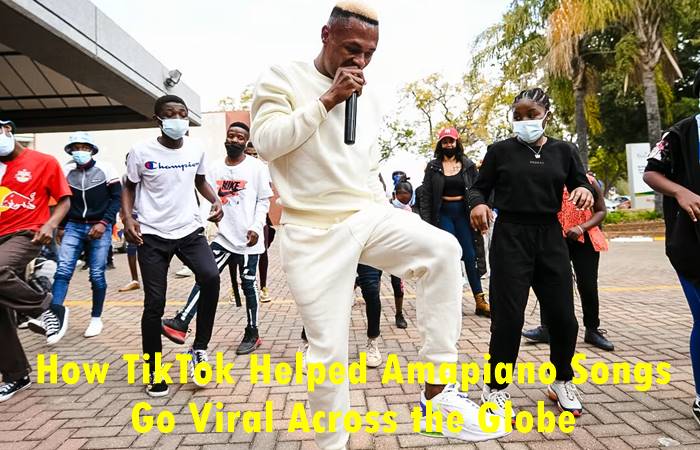
In the past five years, Amapiano has gone from a grassroots genre originating in South Africa’s townships to a global musical phenomenon. While artists, producers, and local radio stations deserve praise for pushing the sound into the mainstream, one of the most powerful vehicles for this explosion has undoubtedly been TikTok.
The video-sharing platform, known for its short-form content, viral dances, and music trends, has become a key tool in promoting new sounds. For Amapiano, TikTok has become more than just a place to promote music—it has become the stage on which the genre truly took flight.
This article explores in detail how TikTok has influenced the rise of Amapiano globally, the mechanisms behind this success, notable moments and creators, and what it means for the future of African music.
1. What is Amapiano? A Quick Background
Amapiano is a genre of house music that emerged in the South African townships in the mid-2010s. Characterized by smooth jazzy chords, deep log drums, and atmospheric pads, Amapiano fuses elements of kwaito, jazz, and deep house.
Initially confined to local taverns and taxis (popularly known as kasi taxis), the sound resonated with South African youth for its authenticity and danceability. By 2019, Amapiano had grown into a dominant force in the South African music industry.
But it wasn’t until 2020, as the COVID-19 pandemic forced much of the world online, that Amapiano found its global megaphone—TikTok.
2. The TikTok Formula: Algorithm + Sound = Viral Potential
TikTok’s structure is unique in the social media landscape. Unlike Facebook or Instagram where content visibility is largely based on followers, TikTok’s “For You Page” (FYP) pushes content based on engagement and watch-time. This means a user with no following can go viral if their video is engaging enough.
Central to this is the TikTok “sound.” Every video can be attached to a specific audio track, which is often reused across thousands—even millions—of other videos. The more a sound is used and interacted with, the more likely TikTok’s algorithm is to boost it.
This setup became fertile ground for Amapiano’s rhythmic and catchy sound.
3. Dance Challenges and the Birth of Amapiano Virality
Amapiano’s musical style is deeply tied to dance culture. The beats and transitions are built for dancefloors, which translated seamlessly into TikTok’s video format.
Early adopters of the genre on TikTok started dance challenges using popular Amapiano tracks. Songs like “John Vuli Gate” and “Dakiwe” exploded thanks to widely shared dance trends created by South African TikTok users.
In the “John Vuli Gate” phenomenon, a group of schoolgirls filmed themselves dancing in uniform to the track—instantly creating a trend that was imitated by thousands of others and even referenced by celebrities.
These dance challenges are powerful because they invite participation. They turn passive listeners into active promoters of the song. Every person who joins the challenge helps amplify the track, creating a snowball effect of virality.
4. Empowering Female and Youth Creators
One of the remarkable features of Amapiano’s TikTok success is how it empowered a new wave of creators—particularly women and youth.
Many of the most influential TikTok dance creators who helped promote Amapiano songs are young girls and women. Figures like Kamo Mphela, Pabi Cooper, and Uncle Waffles became stars not just for their dance talent but because of their presence on platforms like TikTok and Instagram.
This democratization of content creation means that artists no longer need to rely solely on radio airplay or record labels. A 17-year-old with a smartphone can now kickstart a national trend with a 15-second video.
5. Case Studies: Songs That Went Viral Thanks to TikTok
Several songs owe their success, in part or entirely, to TikTok virality:
a. “Dakiwe” by DBN Gogo ft. Lady Du
This track became a major TikTok hit in 2021, sparking dance trends across South Africa and even Nigeria. The unique beat drop and vocal hook made it an ideal candidate for short videos.
b. “Adiwele” by Young Stunna ft. Kabza De Small
“Adiwele” was already a hit locally, but its spread on TikTok helped boost Young Stunna’s profile internationally. Thousands of users created emotional, storytelling, and dance content using the track.
c. “Siyathandana” by Cassper Nyovest ft. Boohle
The song’s romantic vibe made it ideal for couple videos and love-themed content. It performed exceptionally well on TikTok during the 2021 winter season.
6. Amapiano Goes Global: Nigeria, Kenya, UK, and Beyond
With TikTok’s global reach, Amapiano began finding fans outside South Africa.
In Nigeria, artists began experimenting with the sound, with stars like Asake, Zinoleesky, and Davido incorporating Amapiano elements into their music. Songs like “Sungba” and “Buga” gained further traction on TikTok through Amapiano-inspired remixes.
In Kenya, dance influencers and TikTokers helped spread the genre regionally. Across Europe and the UK, DJs began playing viral Amapiano tracks in clubs—many of which audiences recognized from TikTok.
Even in the US, Amapiano found niche audiences through dance creators, TikTok DJs, and Afrobeat enthusiasts.
7. TikTok’s Role in Artist Discovery
TikTok doesn’t just promote songs—it introduces new artists to audiences. Many users hear Amapiano tracks for the first time on TikTok and then search for the artist on Spotify or Apple Music.
Uncle Waffles is a great example. Her rise from obscurity to fame was driven largely by a TikTok video of her DJing an Amapiano set. Within days, she became one of the most talked-about DJs on social media and started booking international shows.
TikTok thus functions as a launchpad for artists looking to build careers without major label support.
8. Challenges and Criticisms
Despite its benefits, there are challenges.
One concern is over-commercialization. As more artists aim to create “TikTok hits,” the authenticity of the genre may be threatened.
Another issue is copyright misuse. Some artists find their tracks being used without proper credit or monetization. TikTok is still evolving in how it handles licensing for African artists, many of whom remain underrepresented in digital rights structures.
9. The Future of Amapiano and TikTok
The synergy between Amapiano and TikTok shows no sign of slowing. With more artists now tailoring parts of their tracks specifically for the TikTok algorithm—highlighting catchy intros, dance-friendly beats, and quotable lyrics—the genre continues to dominate both platforms.
TikTok also inspires innovation within Amapiano itself. As more international creators remix and reinterpret the sound, it evolves, ensuring that it stays fresh and relevant.
For South African music, this is a massive win. It means greater exposure, more international collaborations, and more revenue opportunities for artists, dancers, and content creators.
ALSO CHECK: How Maskandi Music Preserves and Promotes Zulu Culture in South Africa
Conclusion
The rise of Amapiano is a testament to how digital platforms can revolutionize a genre’s reach. TikTok didn’t just amplify Amapiano—it helped define its global identity.
From dusty township clubs to global festival stages, Amapiano’s journey is deeply tied to how youth, creativity, and mobile technology collide. For young African creators and fans, it’s more than just music—it’s movement, identity, and power.
As TikTok continues to evolve, so will Amapiano. And if history is any guide, the next viral Amapiano hit is probably already being danced to on someone’s phone screen.








 MaMkhize Hit with New Legal Setback as Royal AM Loses R27M Deal
MaMkhize Hit with New Legal Setback as Royal AM Loses R27M Deal  Fatal Seduction Season 2 Returns This August
Fatal Seduction Season 2 Returns This August  Banyana Banyana Urged to Improve After Unconvincing WAFCON Victory Over Ghana
Banyana Banyana Urged to Improve After Unconvincing WAFCON Victory Over Ghana ![Shocking moment a house is swept away in deadly New Mexico flash floods [Watch]](https://fakazahiphopza.co.za/wp-content/uploads/2025/07/Flood-150x150.jpg) Shocking Moment A House Is Swept Away In Deadly New Mexico Flash Floods [Watch]
Shocking Moment A House Is Swept Away In Deadly New Mexico Flash Floods [Watch]  Disgraced SA Hockey Coach Brett Clay Deported from US Now Faces Local Abuse Allegations
Disgraced SA Hockey Coach Brett Clay Deported from US Now Faces Local Abuse Allegations  Diogo Jota Tragically Dies in Car Crash at 28 – From Stadium Glory to Sudden Goodbye
Diogo Jota Tragically Dies in Car Crash at 28 – From Stadium Glory to Sudden Goodbye